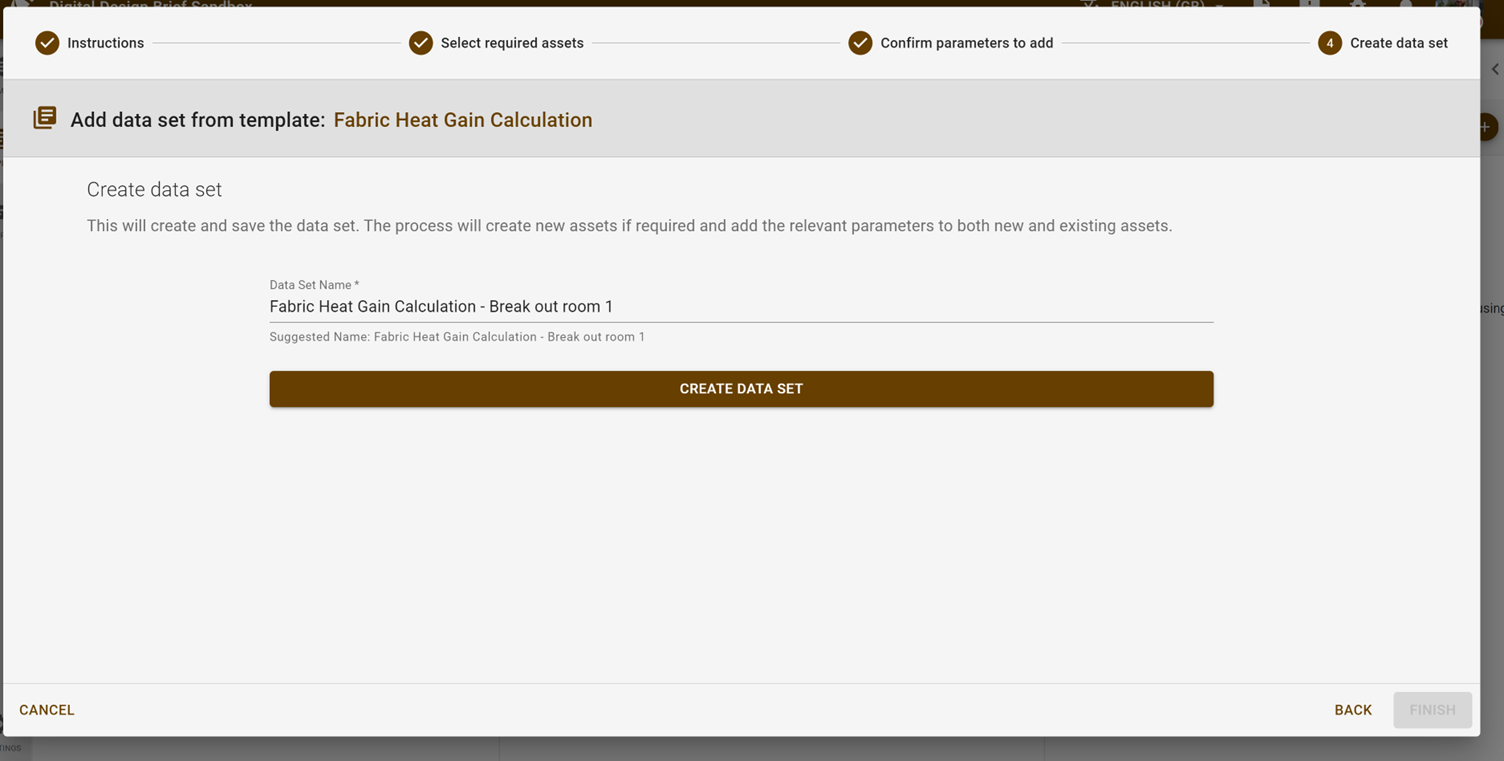# Templates and Data Sets 🫥 → 😄
In this section, we'll guide you through the process of using a Template in your project.
Interested in creating a new template? Reach out to the DDB team at [email protected]
# Definitions
# Templates 🫥
Templates in DDB are like blueprints for a specific process. They contain placeholders for the assets and parameters that you'll need. Think of these placeholders as empty slots that you'll fill in later.
Templates help streamline your work by setting up the structure for you. All you have to do is fill in the blanks with your data.
It's important to note that Templates are designed to work with specific Asset Types. This means you can only apply a Template to the Assets that are suitable for the process defined in the Template.
For instance, consider our Fabric Heat Gain Template. Its purpose is to calculate heat gains for a space. Therefore, it can only be applied to Assets that are classified as a Space. This ensures that the Template and the Asset are compatible and can work together effectively.
# Data Sets 😄
When you apply a template to a project, you can fill in these slots with actual assets and parameters. This filled-in template is what we call a Data Set. It's your original template, but with real data instead of placeholders.
You can create multiple Data Sets for each project. Even though they all come from the same template, they can hold different data. This lets you handle and compare various data within the same project layout.
# Using Templates in the UI
To start, open your project. On the left side of the screen, you'll see a tab labelled Templates. Click on this to access the Template feature menu.
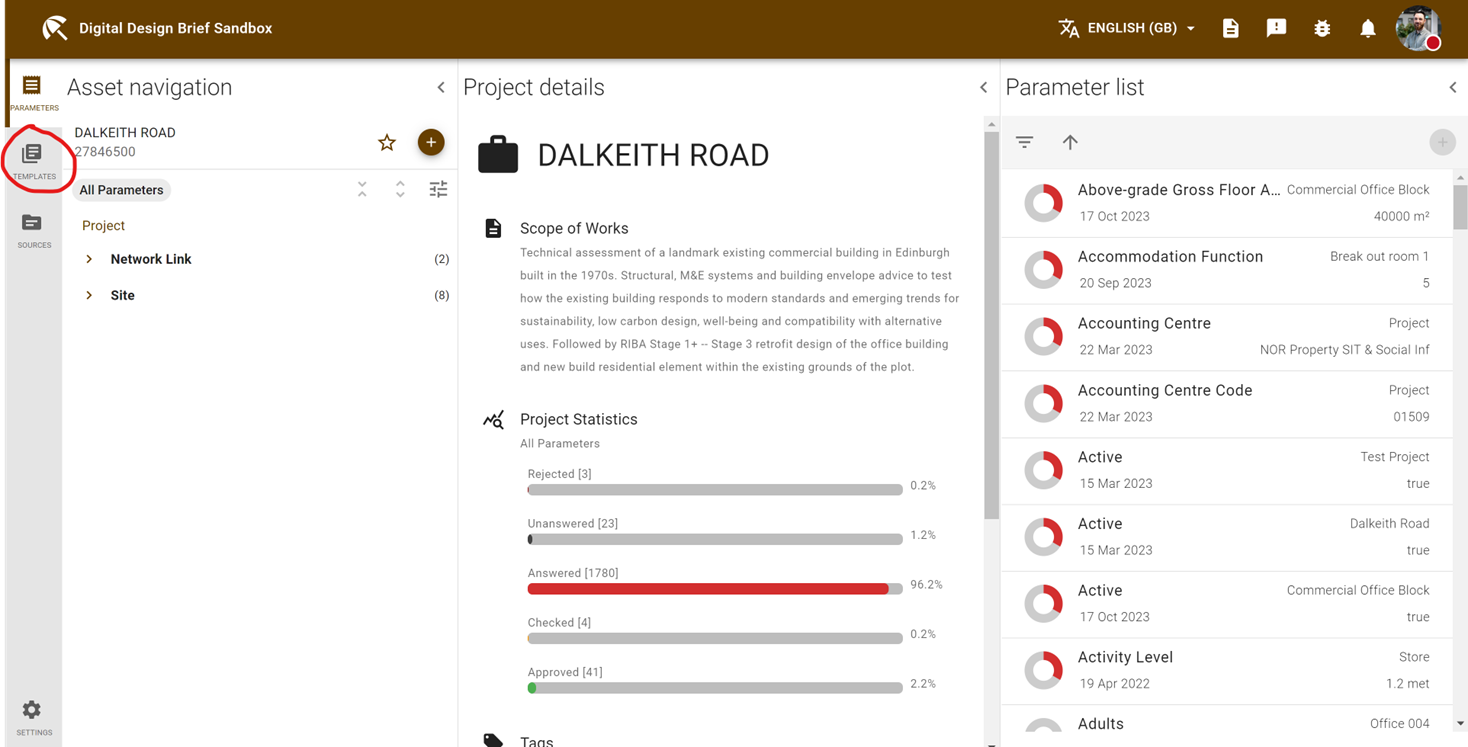
This screen displays various Templates that you can apply to your project. Each Template represents a set of assets and parameters for a specific process. To review the details of a Template, select it from the Templates column. Then, click on the Plus icon to launch the Data Set Wizard.
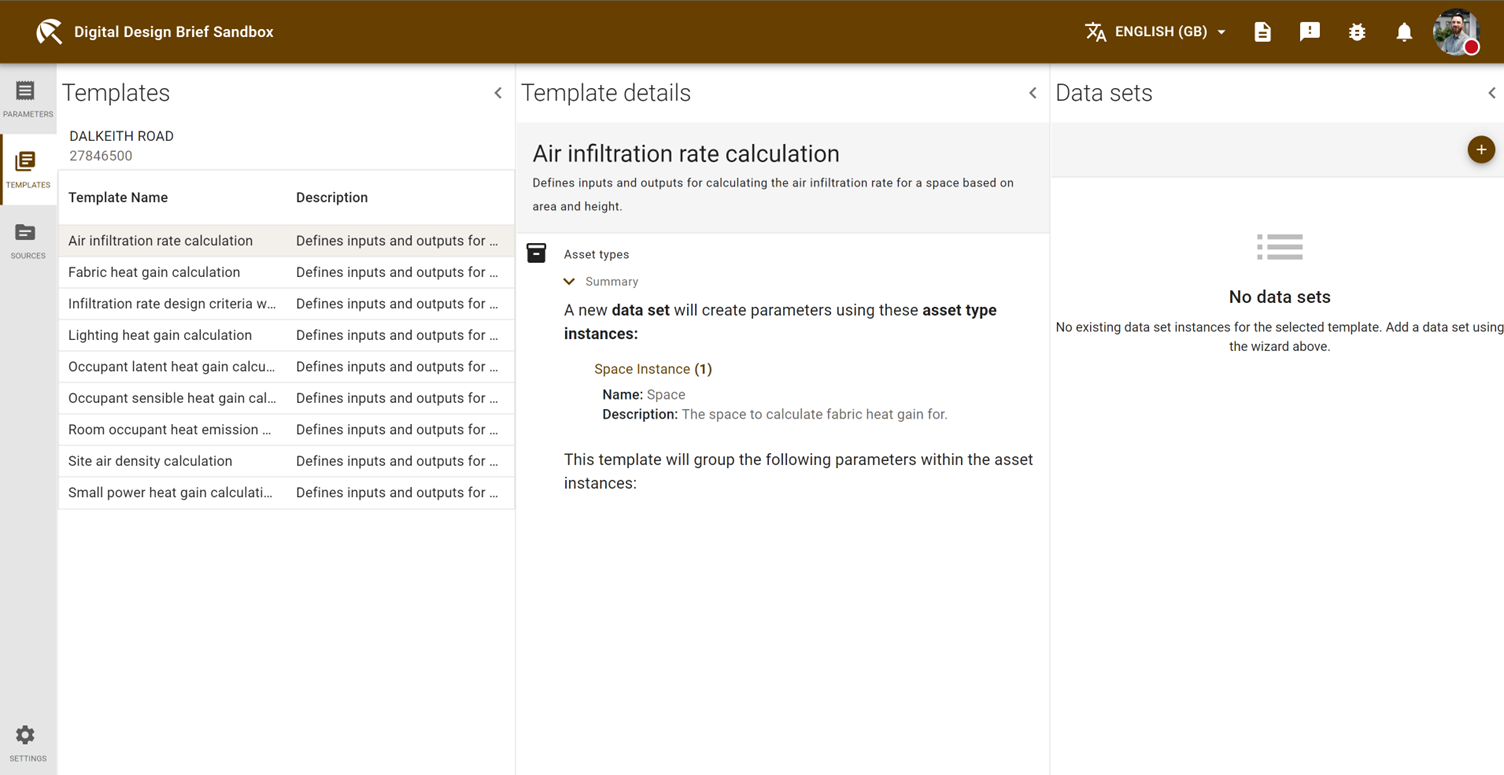
# Data Set Wizard
The Data Set Wizard menu outlines the steps needed to create a Data Set from your chosen Template. There are three simple steps:
- Select the Assets: Choose the assets you want to include in the data set.
- Confirm the Parameters: Some parameters may already exist on the selected assets, while others may be new.
- Create the Data Set: Remember, changes are not saved until this final step.
You can navigate through the Data Set Wizard using the Next, Back, and Cancel buttons at the bottom of the menu. Your progress is displayed at the top of the menu.
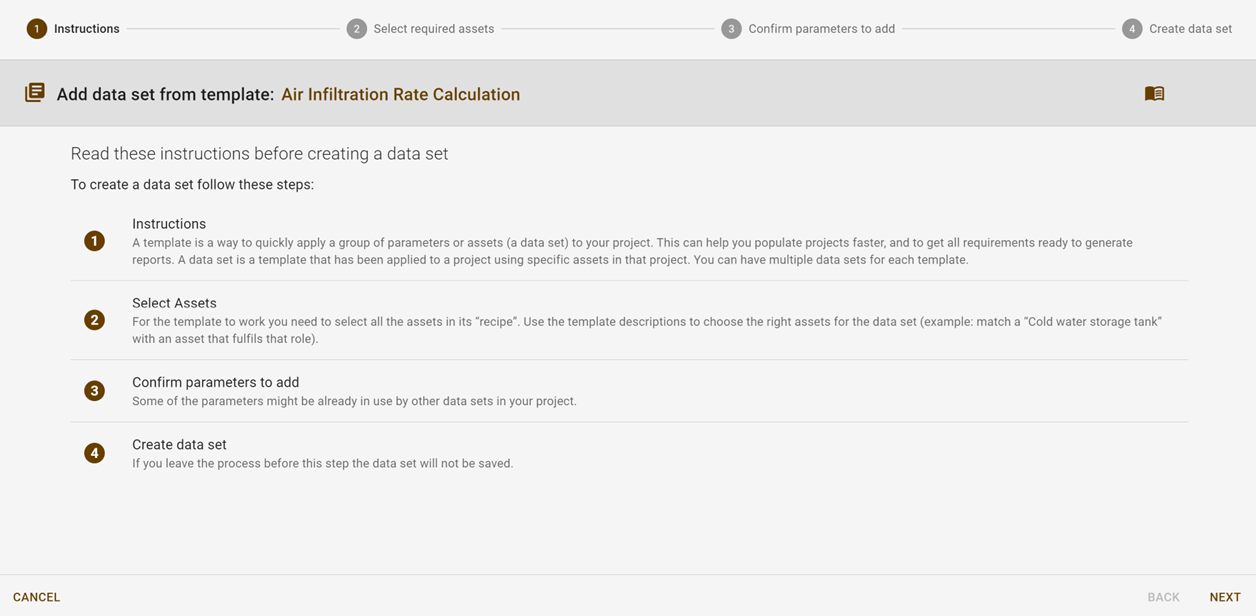
# Selecting Assets
The right-hand panel lists the types of assets required by the Template. The left-hand panel displays your project's Asset Hierarchy. Select the assets you want to apply the template to in the asset hierarchy by ticking the box on the left side. A check mark will appear on each item in the right-hand panel to indicate you've met the requirements to proceed.

The box will turn green when the minimum asset requirements are met.
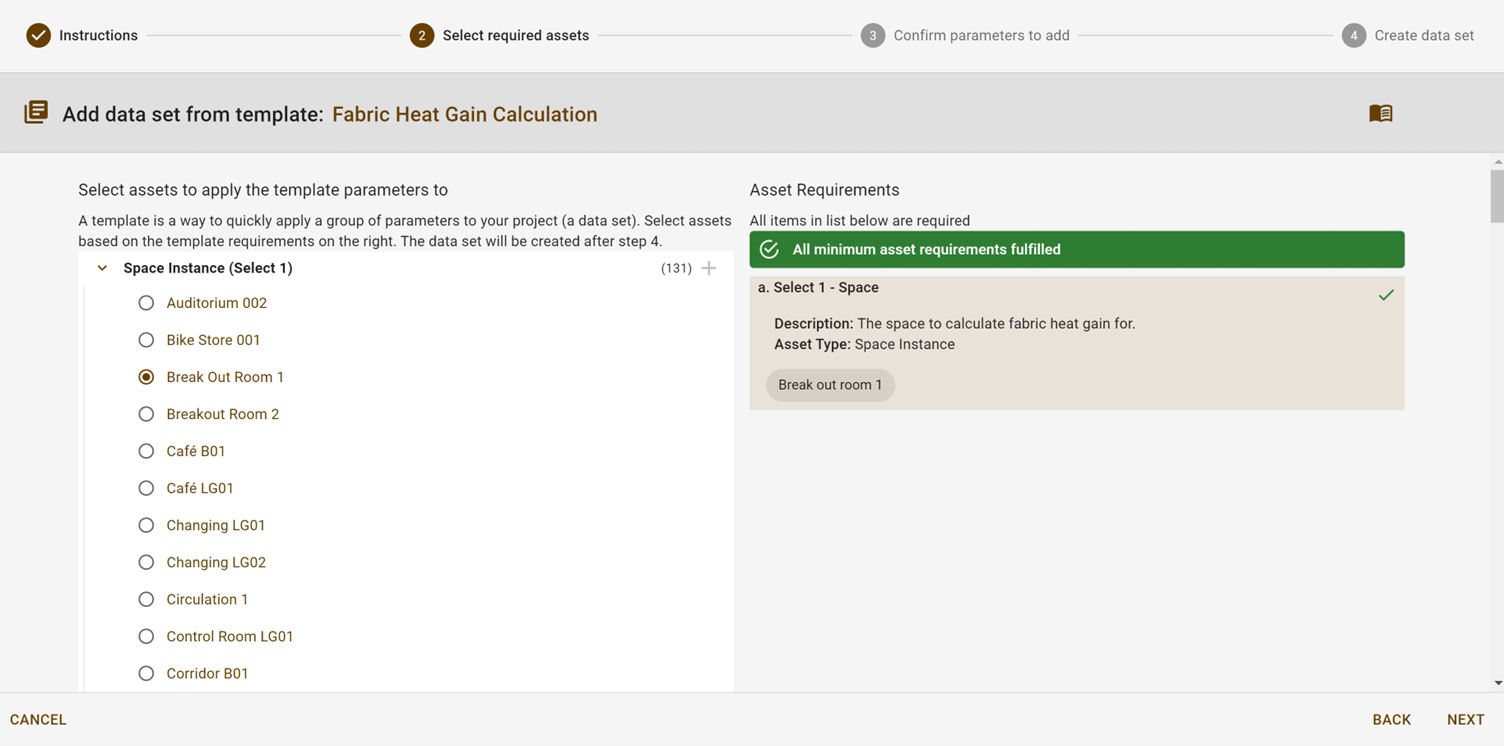
Note: Some Templates require you to select a single asset, while others allow for multiple selections. You may need to select multiple Asset Types to meet the Template's requirements.
Radio buttons (circular buttons) are used when you need to select exactly one option from a set, while checkboxes (square buttons) are used when you can select multiple options from a set.
# Adding Parameters
Next, you'll see the parameters that will be created. Any parameters that don't already exist for the chosen assets are labelled as New and will be created when the Data Set is posted.
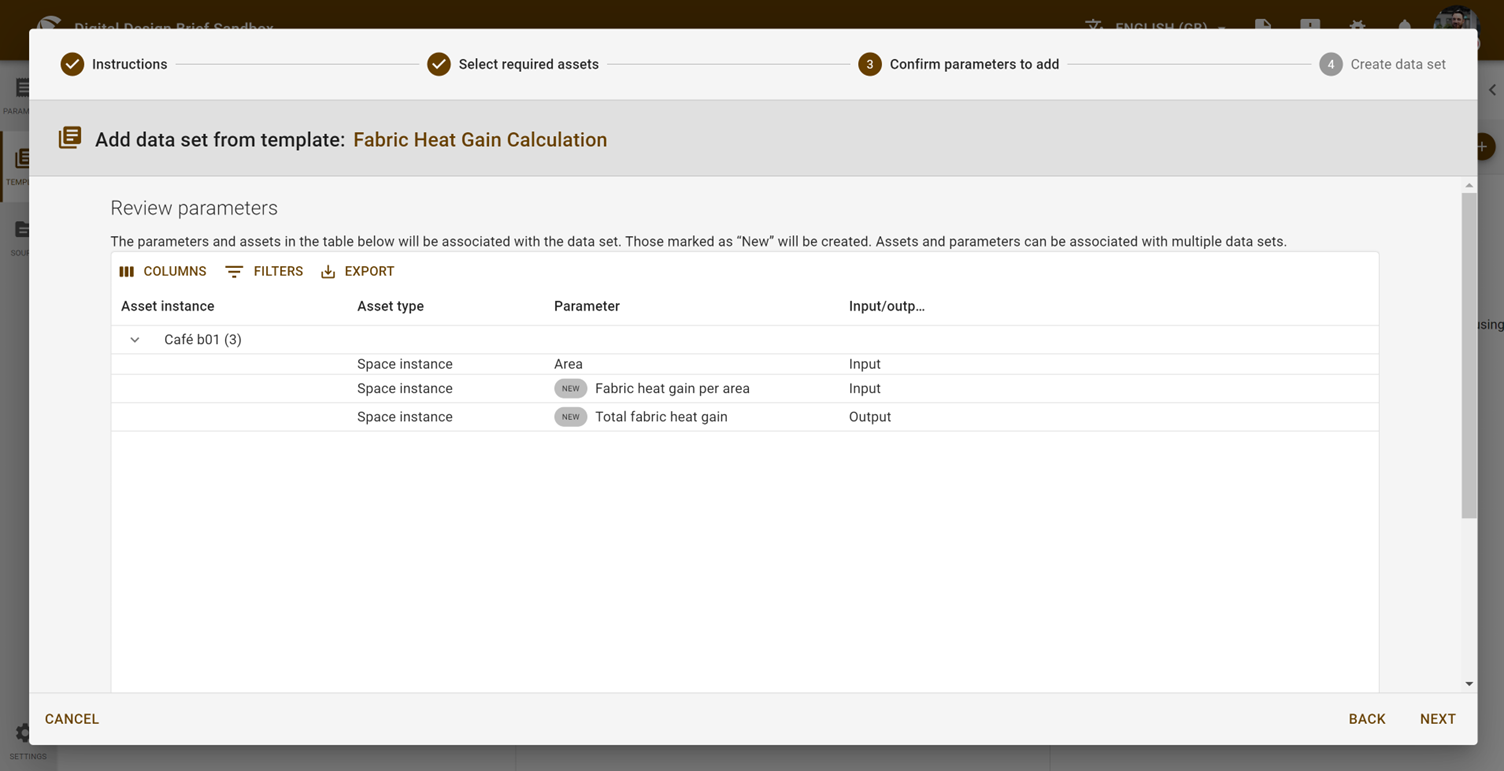
# Creating the Data Set
The last step involves giving your Data Set a unique name. We'll provide a suggested name, but feel free to modify it as you see fit. Just remember, each Data Set for this template in your project must have a unique name.
Once you click on Create Data Set, your data will be posted to DDB.
